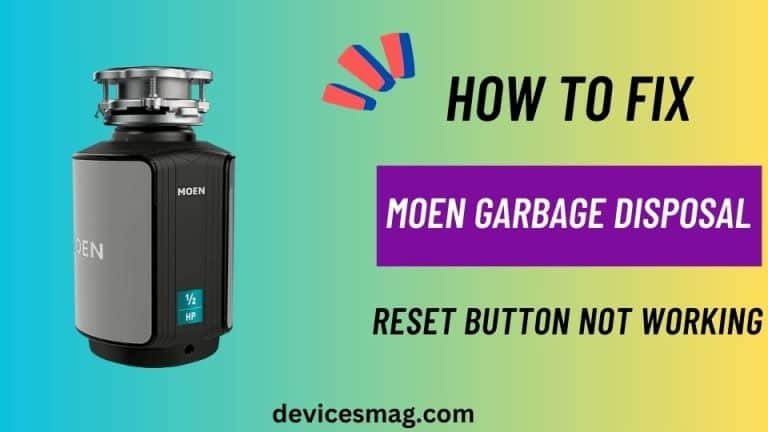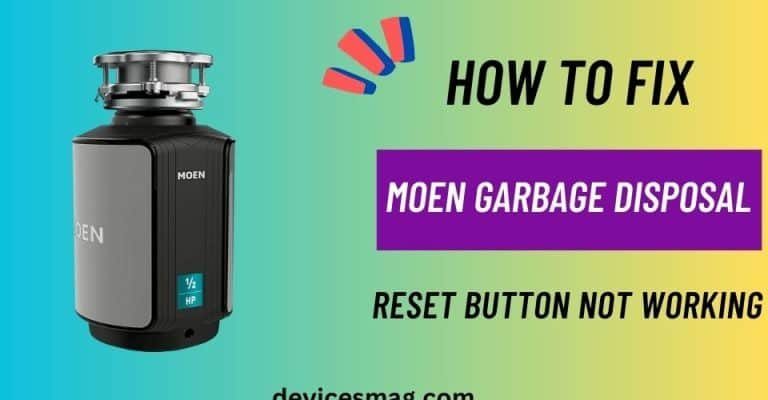
An error code like “LE” might sound intimidating at first. However, it’s just a way for your disposal to communicate with you that there might be a little trouble under the hood. Whether it’s a minor clog, a power supply issue, or something else entirely, knowing where to start can save you a lot of hassle (and maybe a few bucks!). So, let’s dive into the possible reasons behind the LE code and how you can address them, step-by-step, in the comfort of your own kitchen.
Understanding the LE Error Code
So, what exactly does the “LE” error code mean for your Moen garbage disposal? Think of it as a red flag gently waving to alert you that the disposal’s motor might be overloaded. Imagine it like a car engine overheating when you push it too hard. In simple terms, the disposal’s motor is under stress, possibly due to a blockage or an electrical issue, and it needs a bit of relief.
The “LE” code is essentially your disposal’s built-in protective mechanism. It shuts down automatically to prevent potential damage, much like how a circuit breaker cuts the power to avoid a fire hazard. This might sound a little technical, but it’s a smart feature designed to keep your appliance running longer and safer. When this code appears, it’s crucial to address it sooner rather than later to avoid more serious problems.
You might be wondering, “What could overload a motor like that?” Well, several factors could contribute. It could be as simple as trying to grind up too much food waste at once or something more involved like a jammed rotor or even electrical issues. But rest assured, once you know what to look for, the solution might be just a few steps away.
Common Blockages and How to Clear Them
Blockages are perhaps the most frequent culprits behind the LE error. Picture a garden hose kinked in the middle; water can’t flow through smoothly, right? Similarly, when too much food debris clogs the disposal, it struggles to operate normally. Overloading it with potato peels, eggshells, or fibrous vegetables like celery can easily cause a jam.
To tackle these pesky blockages, here’s what you can do: First, make sure the disposal is off. Safety first! Using a flashlight, peek into the disposal’s chamber to see if there’s any visible debris. With a pair of pliers or tongs (not your fingers!), carefully extract any large pieces. Gently turn the manual reset button found on the bottom of most disposals to reset the motor, and voilà—you’re on your way to a functioning disposal once more.
If the blockage is stubborn, sometimes a little bit of DIY magic can help. Pouring a mixture of vinegar and baking soda or even a few ice cubes followed by running cold water can help break down small buildups. It’s like giving your disposal a spa day, unclogging and refreshing its insides. Remember, regular maintenance—avoiding large, non-grindable items—can help prevent these blockages in the first place.
Electrical Issues and Troubleshooting
Sometimes, the culprit might not be something you can see. Electrical issues can cause the LE error by disrupting the power flow to the motor. Think of it like a television that suddenly loses its signal; everything’s connected, but there’s a disruption somewhere. Such glitches can happen if there’s an issue with the power outlet, a tripped circuit breaker, or even an internal problem with the disposal.
Start by checking if your unit is properly plugged in. Then, head to your home’s electrical panel to ensure the circuit breaker hasn’t tripped. If it has, a simple switch back might resolve the issue. Consider testing the outlet with another appliance to confirm it’s supplying power. Sometimes, turning the disposal’s power off for a few minutes before switching it back on can reset minor issues—like restarting a computer when it’s acting up.
If none of these steps work, the issue might be deeper than a beginner’s toolkit can handle. That’s when it’s wise to call in a professional to give it a thorough check. Regularly ensuring your power outlets and connections are in tip-top shape can prevent these hiccups. Think of it as giving your disposal a yearly health check-up—better safe than sorry, right?
Preventative Measures for a Smooth-Running Disposal
So, how can you keep your Moen garbage disposal free from those pesky error codes? The key is maintenance, much like how you’d maintain a car to keep it running smoothly for years. Keep in mind that your disposal works best with small, manageable loads. Avoid overfilling it with too much waste at once, and steer clear of grinding materials that it’s not designed to handle, such as bones or coffee grounds.
Regular cleaning is another useful habit. A weekly rinse with cold water can help, along with occasionally grinding up a few ice cubes to clean blades and remove odors. Think of it as brushing its teeth to keep it in mint condition. Additionally, you could incorporate some lemon peels to freshen things up naturally.
Finally, always be attentive to any unusual noises or struggles from your disposal. Early detection of these signs can prevent them from escalating into full-blown issues. Like any appliance, a little love and care go a long way, ensuring it remains a helpful kitchen companion and not a source of frustration.
In summary, dealing with an LE error code on your Moen garbage disposal doesn’t have to be a daunting task. With a little patience and knowledge, you can tackle the common causes effectively. You’re now equipped to handle those bumps in the road like a pro, ensuring your disposal remains an efficient kitchen helper for years to come.
